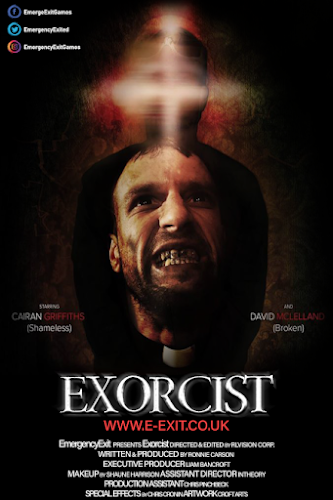"♫ You know we got a mystery to solve... ♫"
Publisher:
USAopoly (The Op)
Designers:Jay Cormier, Sen-Foong Lim, Kami Mandell
Artists:Rob Lundy, Rick Hutchinson
Languages:English
# of Players:1 or more (I recommend 3-4)
Age:12+ (I'd say 10+)
Duration:? (there are 2 chapters, which I'd say can take 1 to 2 hours each)
BoardGameGeek Reference:
Game Design & Mechanics
 |
| Sample game components |
- Guess I should start off by pointing out that this game's mechanics are very reminiscent of Kosmos' Adventure Games series, which I reviewed just a few days ago. However, since those are two distinct offerings, I don't want to force people to learn about it through another post. Consider yourselves warned, though - it might read as if I'm repeating myself in a few places.
- The game main components are two decks of cards that you only reveal whenever you're asked to.
- Map Tiles are numbered, oversized cards. As you explore the game setting, you'll be allowed to pick and place an increasing number of them on the table, building your "board" as you go.
- Clue cards are regular-sized, and also bear a unique number. Those cards can show you an item everyone can now use, or an interesting document, or even a "close-up view" of part of a room.
- The game also includes a series of "Secret Envelopes". Those too, are numbered, and opened whenever the game tells you so.
- The whole "Mystery Machine" gang is present, both as cardboard standees and as paragraph-filled Narrative books. For most of the game, though, you won't have access to all of them at once. 🤔
- Contrary to what you might expect, players don't get to "pick" a character for themselves. Everyone plays in turn, and on their turn they just pick one of the available characters, move it somewhere on the map, then perform one action with him/her.
- Here's the kicker: characters have one single action associated with each of them: Velma "researches", Shaggy "eats", Daphne "uses", Scooby "smells", and Fred "investigates". (Yeah, the difference between Velma & Fred isn't clear to me either, but as you'll see, it won't matter much.) So the character you pick also indicates the action you want to perform. You grab the corresponding book, and look up a paragraph number constructed from the parts you want to interact with.
- The most basic action is to explore a specific area within a room. Map tiles bear a bunch of 3-digit numbers, so a character can interact with every nook & cranny by reading the corresponding paragraph out loud.
- Inventory objects (which have shorter numbers) can be combined one with another, by merging their digits to create a 4-digit number, and checking if a corresponding entry exists in the Narrative book.
- The Narrative books can even be used to validate the occasional puzzle, as long as its answer is a 4-digit code.
- While the game can - of course - be played in one sitting, it's broken down into 2 chapters, making it easier to pause in-between. The game box even includes an empty envelope you can use for storage.
- You start off the game with a "supply" of 20 Scooby Snacks. Whenever you make a particularly poor decision, or try an incorrect solution, you need to "eat" one. Your remaining snack count will then affect your final ranking.
- If stuck, there is a "hint table" at the back of the rulebook. You can look up a room name to get a list of paragraph entries, which will give you incremental hints. Higher-level hints will also cost you Scooby Snacks.

|
| Rulebook example |

|
| Rulebook example |
Pros
- The game manages to convey a pretty good "Escape Room" feel - so much that I've decided not to mark it with the infamous #notquite tag, in spite of the lack of a time limit.
- With envelopes, cards and paragraph books, the game leverages all the best mechanics out there.
- The game does a wonderful at conveying the "Scooby-Doo" feeling. I'm sure fans could mimic the characters' voices while playing.
- Overall, the puzzles are varied and clever. I really enjoyed them.
Cons
- The "characters are actions" mechanic is probably the weakest one of the game. While I understand the intent, it feels a bit artificial in several places.
- I've seen people complaint about the game "not having been tested enough", although I personally haven't struggled the way some of them have. I did notice that some of the paragraph numbers listed in the hint table just don't exist, but that's the worst I personally experienced. Apparently, others had to deal with missing components, and other such annoyances.
- Speaking of the hints, despite the attempt at providing incremental help, there are no illustrations of any sorts in them, and so I suspect that some folks are bound to get annoyed at not properly understanding a solution.
Errata
- As mentioned above, the Hints section seems slightly buggy. I've prepared this alternative instead. (An empty space between two hints means that the hints are about different topics.)
- One of the hints implies the use of a "number 19", with no such number present. It should really be "91".
House Rules & Suggestions
For more competitive gameplay, I suggest you do the following:
- More expensive hints
Every time you look up a hint, if that hint does offer some useful knowledge, eat one Scooby Snack if it's in a white column, and two if it's in a yellow one.

















